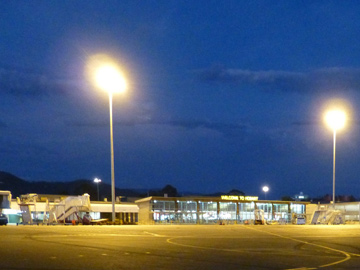
An incident where a passenger jet took off at night without the crew noticing that the runway lights were off has illustrated the tricks that our minds can play on us.
At 11.27pm on 14 December 2012, the flight crew of a Jetstar Airbus A320 was preparing for take-off at Hobart Airport.
Outside tower hours, Hobart Airport operated as a non-towered, uncontrolled airport, operating on a common traffic advisory frequency. During that time, pilots could use radio transmissions to turn on the runway lights themselves.
As the flight crew prepared for take-off, they were under the impression that the runway lights were already on. The aircraft had several external lights, which illuminated the ground in front of the aircraft, and the Captain and First Officer saw several indicators that they took to mean that the lights were on. Both flight crew later commented that they had no difficulties maintaining directional control during the taxi and take-off roll, further noting that at no time did anything seem unusual or out of the ordinary.
...expectation bias is ‘seeing’ what you expect to see even when it is not there — in this case, runway lighting being on.
Runway and taxiway lighting serves many important functions for a departing aircraft. It can show the end of the runway, as well as necessary guidance for approach and landing if an emergency arises shortly after take-off. While the aircraft took off safely on this occasion, the incident highlights the potential hazards associated with change blindness, inattention blindness and expectation bias.
Change blindness occurs when a person does not notice that something is different about the visual environment relative to before the change. Research has shown that in some cases, quite dramatic changes are not detected, particularly if changes occur when the observer is not looking at the relevant part of the visual environment.
Inattention blindness occurs when a person does not notice an object which is visible, but unexpected, because their attention is engaged on another task. In this instance, the absence of airport lighting was noticeable, if looked for. However, the crew had an assumption or expectation that the lighting was on.
In simple terms, expectation bias is ‘seeing’ what you expect to see even when it is not there— in this case, runway lighting being on.
As a result of this occurrence, Jetstar Airways and Hobart International Airport have both taken action to ensure there is not a repeat of this incident.
Read the report: Runway event involving Airbus A320, VH-JQG, at Hobart Airport, Tasmania, on 14 December 2012


